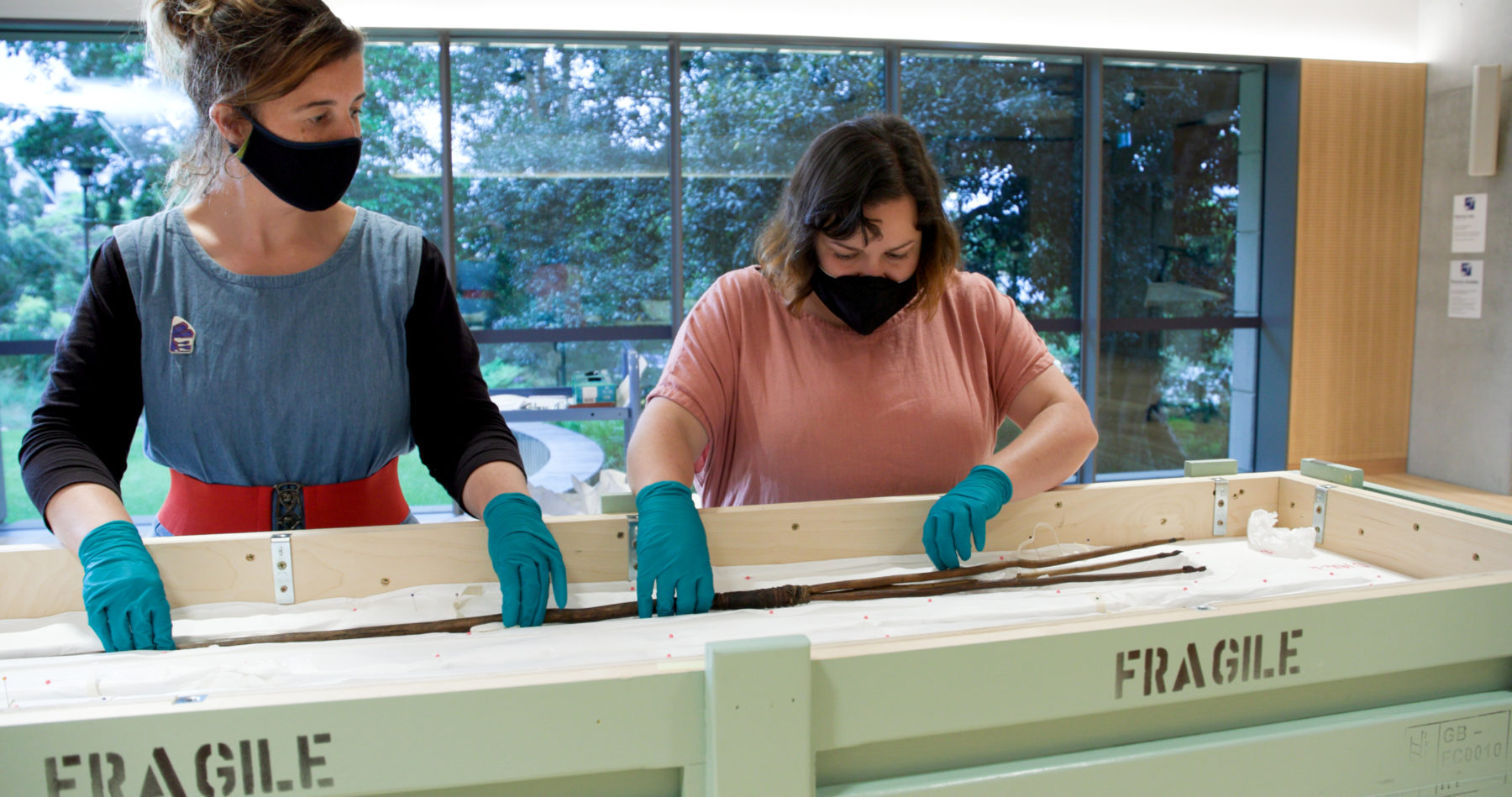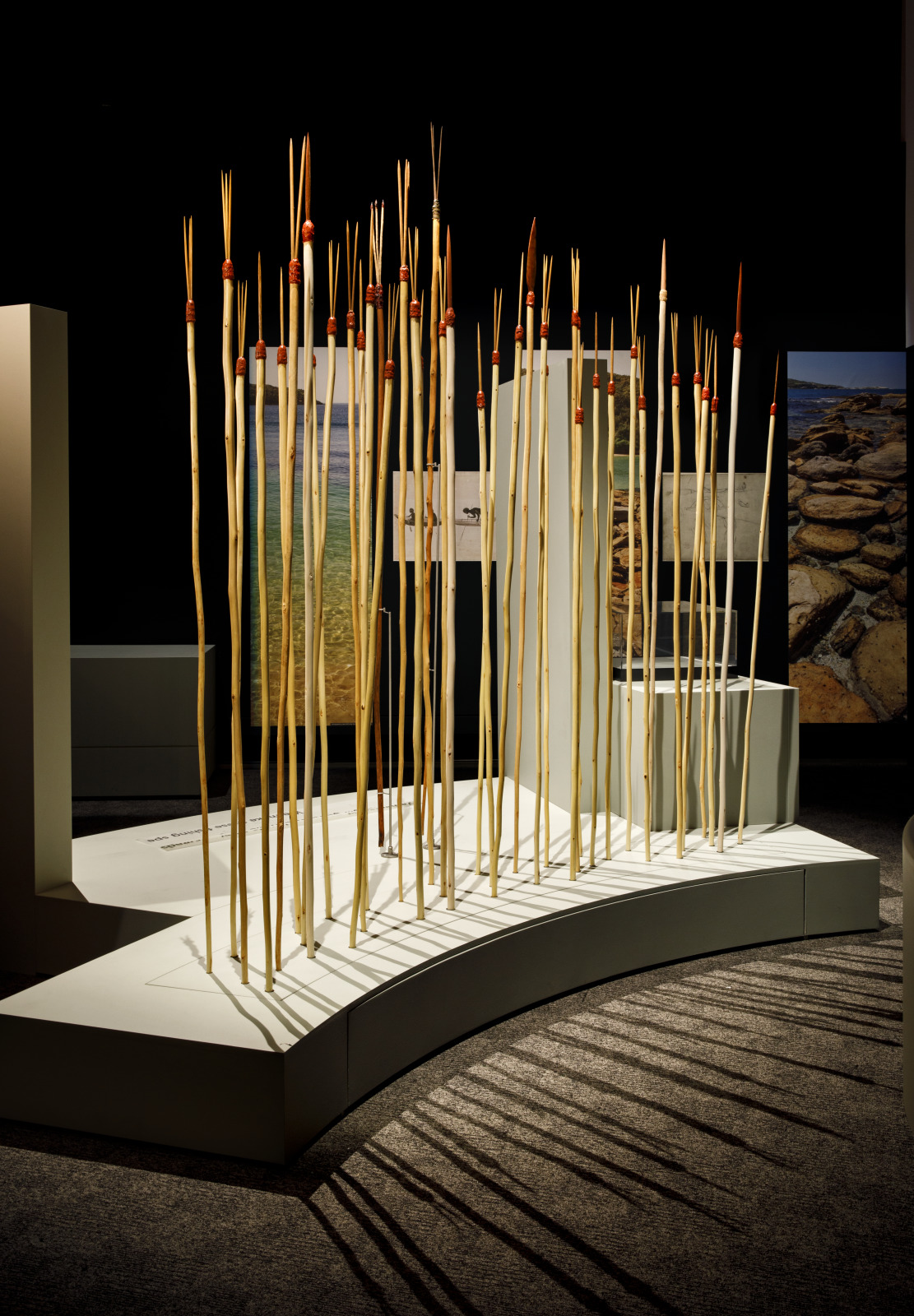Indigenous spears taken by James Cook in 1770 return home to Sydney

When Lieutenant James Cook and the crew of the Endeavour landed in Sydney’s Botany Bay in 1770 the Gweagal men resisted the invasion – ‘Gweagal’ referring to the clan of the Dharawal peoples, traditional owners of the southern area of Kamay (Botany Bay).
Eventually the Gweagal men were forced to withdraw, their weapons being no match for the gunfire they encountered. The three Kamay spears are just some of an estimated fourty spears taken by the Endeavour landing party from a Gweagal campsite. They have not returned to Sydney since. Until now, more than 250 years later.
The spears were presented to the University of Cambridge in 1771 and remain part of the university’s Museum of Archaeology and Anthropology (MAA).
MAA’s director, Professor Nicholas Thomas, says “the spears taken away by Cook and other members of the Endeavour‘s crew are exceptionally significant.”
“They represent the ways of life of Kamay people at the time of first contact. They are the first artefacts collected by any European from any part of Australia, that remain extant and documented. They reflect the beginnings of a history of misunderstanding and conflict.”
In 2020, the MAA loaned the spears to the National Museum of Australia in Canberra where they formed part of the Endeavour Voyage: The Untold Stories of Cook and the First Australians exhibition.
The National Museum then extended its loan of the spears to enable them to travel to Sydney before returning to the UK.

They are now on display at The University of Sydney’s Chau Chak Wing Museum.
“These precious objects offer an insight into the story of previous generations and their experiences of the world. They will inform new generations and help today’s peoples learn traditional techniques,” says The University of Sydney’s Deputy Vice-Chancellor (Indigenous Strategy and Services), Professor Lisa Jackson Pulver.
“We are a living continuous culture. These items are an important part of the cultural identity of the peoples they came from and of the knowledge they hold. Their sensitive and appropriate display ensures ongoing cultural connection and practice.”

together representing the 40 taken away by Endeavour’s crew in 1770. The 37 additional spears were made by Gweagal Clan senior leader, Rodney Mason. Image credit: The University of Sydney
The three-month display of the spears also aims to facilitate closer collaboration between museums and Indigenous communities.
While at the University’s Chau Chak Wing Museum, the spears will be the focus of access and education programs, developed in collaboration with the La Perouse Local Aboriginal Land Council.
“Many of the families within the La Perouse Aboriginal community are descended from those who were present during the eight days the Endeavour was anchored in Kamay. We will continue to work to ensure our community’s access to these and other important artefacts and materials; they remain an important connection to our past, our traditions and cultural practices, and to our ancestors,” says Chairperson of the La Perouse Local Aboriginal Land Council, Noeleen Timbery.
Acting director of the Chau Chak Wing Museum, Dr Paul Donnelly, says “we are pleased to be involved in important conversations on cultural practice.”
“The University is taking a leading role in enabling conversations while providing a culturally safe space for the spears’ display.”




